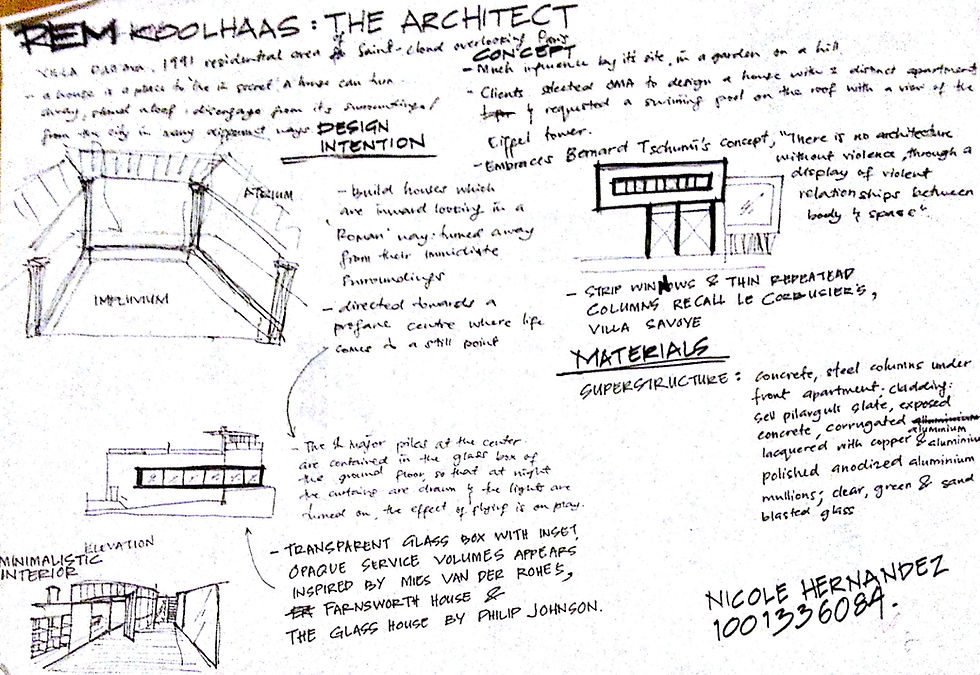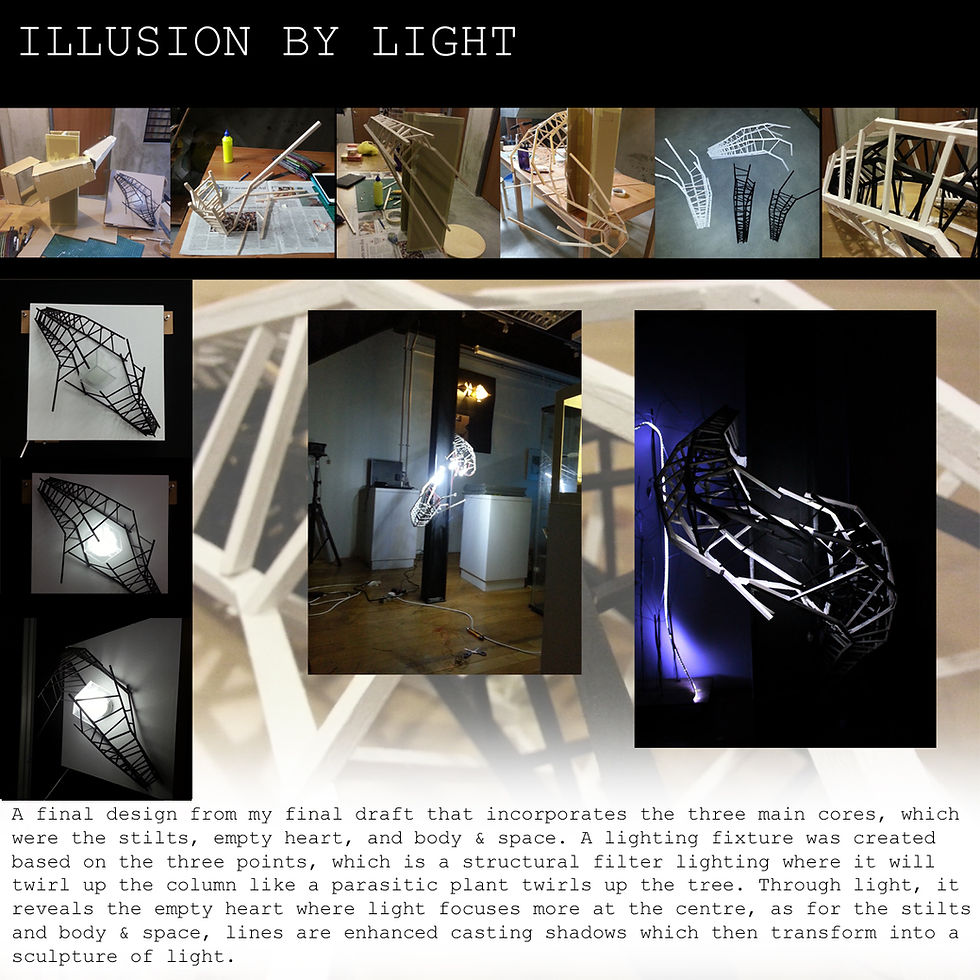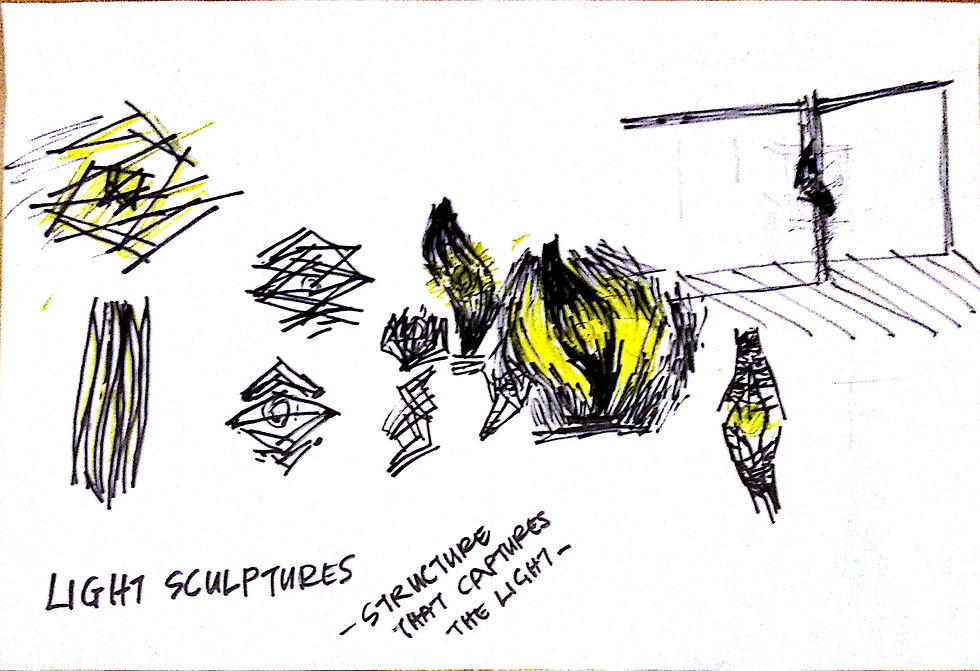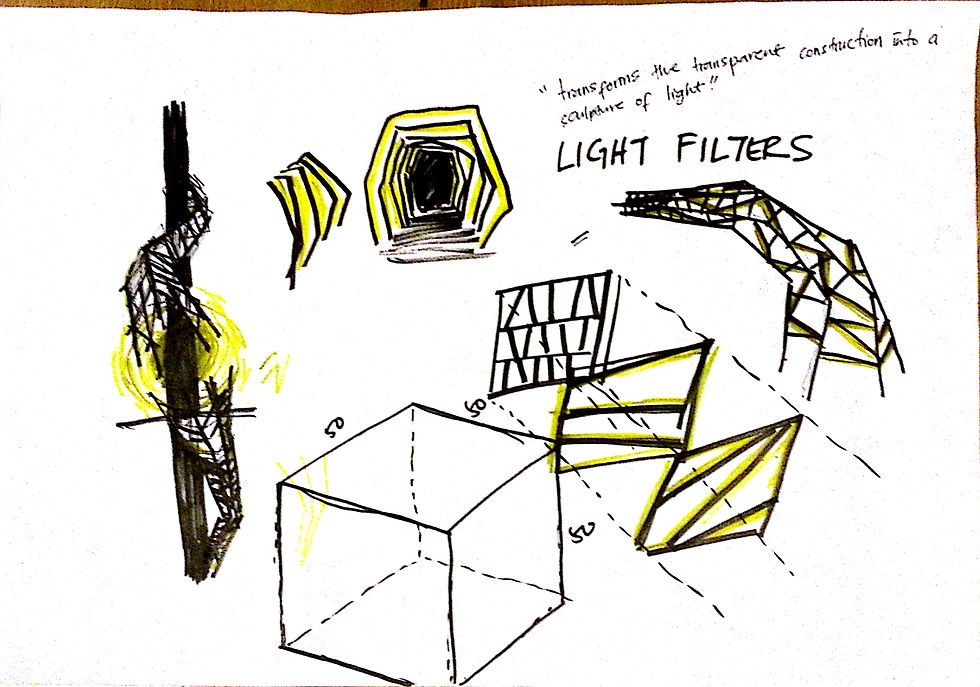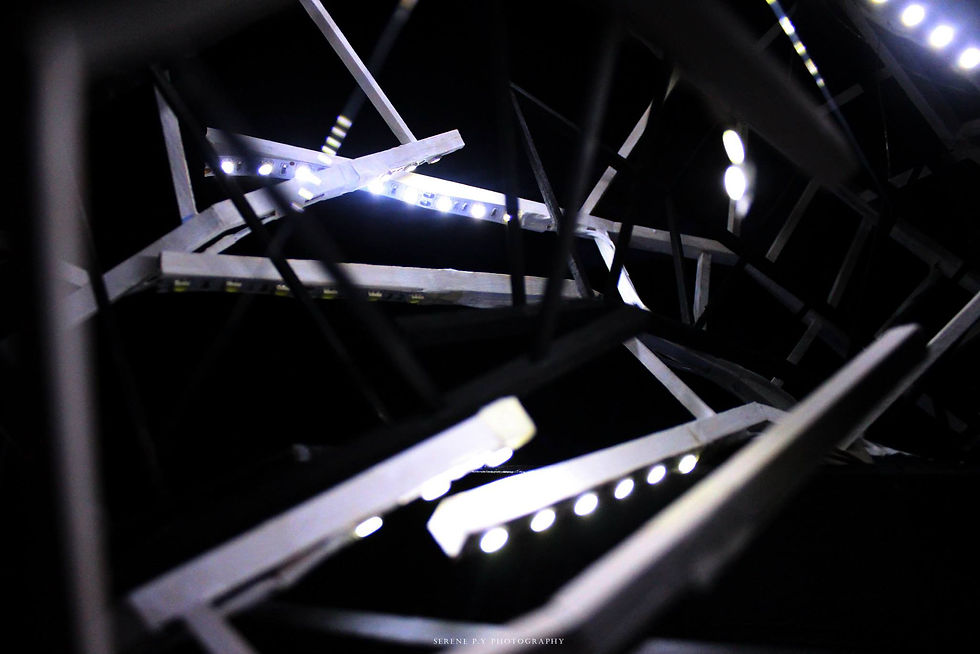ACADEMIC PORTFOLIO
+ CV
Engaging Nature
Year 1 Semester 2
Biomimicry: The proposal analyze spider webs that serves several design principles which can be applied in a building, such as;-
1. hierarchy, where the spider lingers and wait for prey,
2. Assymetry, the construction of webs rely on the support; tree branchess, below ground, under rocks, above trees etc.
The spatial organization of these orbwebs are centralized - thin silks radiates towards the center creating a plane to capture its prey. Formal collision of geometry are 2 forms differing in geometry; the hexagon and radial silks. This creates a fragmental structure that seems fragile but strong. Elements defining space; base plane allows free movement openings & space defining elements; a rather open space but clean and sleek transparency under the sun to hid itself from predators. Qualities of architectural space; spacious & wide, floating sensation, slender above ground, spatial continuity, fusing into nature, & natural illumination. Configuration of path; due to its open base plane which allows free movement, the movement creates a composite pathway. Space planning; spiders uses its web to protect eggs, sometimes to create a solid space for it to live in, like the leaf curler. Materials however, are all natural elements and a synthetic material to replicate tensile webs, the steel cables, hard wood resembles natural and light weight, pull meshed resembles fragmental structure of webs, clear and transparency.
The design intention for this project is to incorporate the 3 main cores from the Precedent Study - Rem Koolhaas's Villa Dall'Ava and Insect Analysis into a Retreat House at FRIM. The open spatial organization proposes an open space which blurs the boundary between indoor and outdoor forming a continuity of nature. Thus, engaging nature.

